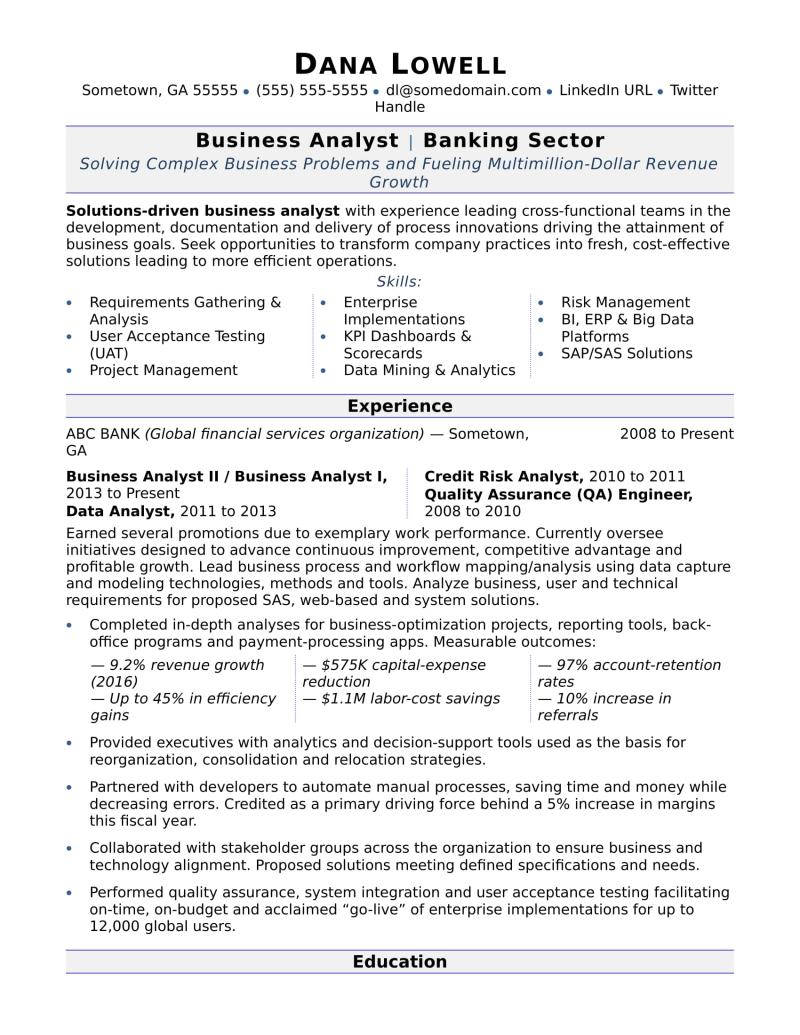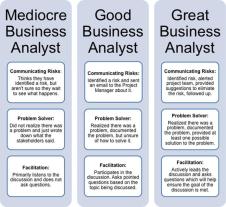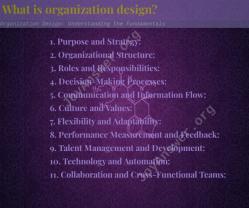What are the objectives of a business analyst?
The objectives of a business analyst (BA) center around analyzing and understanding business needs, identifying opportunities for improvement, and contributing to the success of organizational initiatives. BAs play a crucial role in bridging the gap between business stakeholders and technology teams. Here are the key objectives of a business analyst:
Understand Business Needs:
- Analyze and comprehend the business goals, objectives, and requirements by collaborating with stakeholders across various departments.
Gather Requirements:
- Elicit, document, and prioritize detailed business requirements, ensuring a comprehensive understanding of what the stakeholders need from a project or initiative.
Analyze Business Processes:
- Evaluate and model existing business processes to identify inefficiencies, bottlenecks, and areas for improvement.
Identify Opportunities for Improvement:
- Work with stakeholders to identify opportunities for enhancing business processes, reducing costs, and improving overall efficiency.
Facilitate Communication:
- Act as a communication bridge between business stakeholders and technology teams, ensuring that both parties have a shared understanding of requirements and objectives.
Data Analysis:
- Analyze data to derive insights, trends, and patterns that can inform business decision-making and support strategic initiatives.
Solution Evaluation:
- Assess proposed solutions for feasibility, alignment with business goals, and potential impact on existing systems and processes.
Documentation:
- Create and maintain clear, concise, and accurate documentation, including requirements documents, user stories, process flows, and other relevant artifacts.
Problem-Solving:
- Identify and address business problems by proposing effective and efficient solutions that align with organizational objectives.
Risk Assessment:
- Identify and analyze potential risks associated with proposed solutions, ensuring that risk mitigation strategies are developed and communicated.
Prototyping and Mockups:
- Create prototypes, wireframes, and mockups to visualize and communicate proposed solutions to stakeholders, ensuring alignment with expectations.
User Acceptance Testing (UAT):
- Collaborate with end-users to plan and conduct user acceptance testing to validate that solutions meet user requirements and expectations.
Change Management:
- Manage changes to project scope, requirements, and timelines, ensuring that changes are well-documented and communicated to relevant stakeholders.
Quality Assurance Support:
- Collaborate with quality assurance teams to ensure that deliverables meet specified requirements and adhere to quality standards.
Training and Support:
- Develop training materials and provide support to end-users during the implementation of new systems or processes.
Continuous Improvement:
- Identify opportunities for continuous improvement in business processes, systems, and workflows.
Collaboration with IT Teams:
- Work closely with IT teams, developers, and other stakeholders to ensure that technical solutions align with business requirements.
Project Management Support:
- Contribute to project plans, timelines, and progress tracking, providing valuable insights to project managers.
Knowledge Transfer:
- Facilitate knowledge transfer between different teams and stakeholders, ensuring a shared understanding of business requirements and objectives.
The overarching objective of a business analyst is to contribute to the successful execution of organizational projects and initiatives by ensuring that technology solutions meet business needs and contribute to overall business objectives. BAs bring a blend of analytical, communication, and problem-solving skills to drive positive change within an organization.
Unmasking the Masterminds: Demystifying the Objectives of Business Analysts
Business analysts stand at the crossroads of business needs and technological solutions. Their objectives reach far beyond mere task completion; they are architects of change, driving efficiency and propelling organizations towards success. Let's delve into the core objectives of business analysts, their contributions to projects and goals, and how they ultimately impact organizational improvement:
1. Primary Objectives:
- Understanding and documenting business needs: Through interviews, surveys, and data analysis, they grasp the challenges, opportunities, and desired outcomes of various initiatives.
- Translating needs into technical requirements: They bridge the gap between business language and technical specifications, ensuring clear communication and feasibility of solutions.
- Project management and stakeholder communication: They keep projects on track, manage timelines, and ensure consistent communication with stakeholders at all levels.
- Solution design and documentation: They define system functionalities, create prototypes, and develop technical specifications for developers to implement.
- Data analysis and reporting: They gather, analyze, and interpret data to provide insights that inform decision-making, measure project success, and identify areas for improvement.
2. Contribution to Project and Initiative Success:
- Reduced risk and improved feasibility: Their thorough analysis and clear requirements minimize project pitfalls and ensure solutions align with actual business needs.
- Enhanced efficiency and cost-effectiveness: Their focus on streamlining processes and optimizing solutions leads to greater operational efficiency and cost savings.
- Improved stakeholder satisfaction: Their communication expertise and dedication to meeting stakeholder needs result in higher project buy-in and satisfaction.
- Innovation and problem-solving: Their analytical skills and creative thinking help identify innovative solutions and tackle unforeseen challenges.
3. Specific Goals and Outcomes:
- Delivering projects on time and within budget: They set clear goals and milestones, manage resources effectively, and strive to achieve project goals efficiently.
- Increasing user satisfaction and adoption: They ensure developed solutions meet user needs and expectations, leading to higher adoption rates and positive user experiences.
- Enhancing business performance: Their efforts ultimately aim to deliver solutions that address business challenges, improve key metrics, and contribute to overall organizational growth.
- Improving decision-making: They provide data-driven insights and informed recommendations, enabling stakeholders to make better strategic decisions.
4. Alignment with Business and Strategic Goals:
- Business analysts are not isolated entities; their objectives intertwine with the broader organizational goals.
- They translate strategic initiatives into actionable plans, developing solutions that directly address key business objectives.
- Their focus on efficiency, cost-effectiveness, and user satisfaction contributes to long-term organizational sustainability and competitive advantage.
- By continuously analyzing data and providing insights, they assist leadership in making informed decisions aligned with future strategies.
5. Supporting Decision-Making and Organizational Improvement:
- Business analysts provide data-driven insights that empower stakeholders to make informed decisions about resource allocation, project prioritization, and strategic direction.
- They identify process inefficiencies and propose solutions for improvement, leading to operational optimization and cost reduction.
- Their focus on user needs and feedback contributes to developing user-centric solutions that enhance overall customer satisfaction and retention.
- By actively identifying risks and opportunities, they help organizations adapt to changing landscapes and navigate challenges effectively.
In conclusion, business analysts are not mere cogs in the machine; they are architects of positive change. Their objectives go beyond task completion; they aim to bridge the gap between business needs and solutions, drive efficiency, and ultimately, ensure organizational success. By understanding their contributions, appreciating their alignment with larger goals, and supporting their efforts, organizations can unlock their full potential and thrive in a dynamic and competitive world.
Remember, the best business analysts are not just technicians or communicators; they are strategic thinkers and trusted advisors who guide organizations towards a brighter future, powered by data-driven insights, innovative solutions, and unwavering dedication to improvement.













